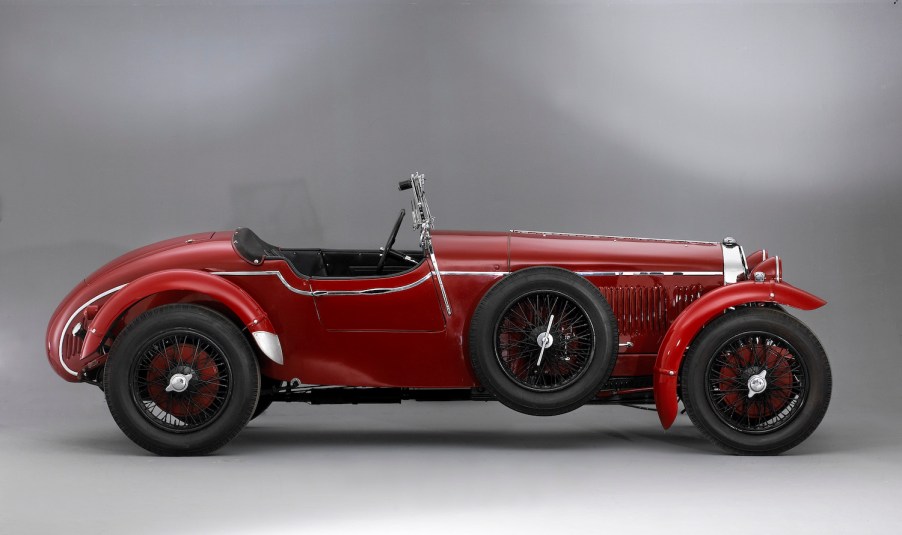
The Origin of the GT Badge on Cars May Surprise You
Have you ever considered one of the many cars with a GT badge and wondered what GT means or where the phrase came from? GT stands for Gran Turismo. Despite the wide range of vehicles that now wear the badge, it was once reserved for the pinnacle of luxury-level European sports cars.
GT originally stood for Gran Turismo

1929 Bugatti Type 44 | Aydin Palabiyikoglu/Anadolu Agency/Getty Image
GT (sometimes written G/T) originally stood for the Italian term Gran Turismo. Gran Turismo translates to Grand Tourer. As early as the 1920s, a Grand Tourer was a luxurious sports car engineered for crossing long distances in opulent comfort.
You can think of an early Grand Tourer–or Gran Turismo–as a car custom-built for a wealthy person who liked to drive their own car. This was relatively rare in the 1920s. So early Grand Tourers often started as a chassis built by a racecar manufacturer such as a Bugatti or Rolls-Royce.
The new owner would then take the chassis to the local coachbuilder. The craftspeople there interviewed the owner about their preferences and sense of style. Then they built a completely custom two-door coupe or convertible body, resulting in a true Grand Tourer.
Confusingly, in British English, a “touring car” also meant a convertible–often a large vehicle with a third row of seating. But this was a very different market segment than a Gran Turismo–or GT–which was often built for only a driver and a passenger.
Alfa Romeo built the first factory Gran Turismo

Gran Turismos–or Grand Tourers–proved very popular ways for Europe’s elite to travel from city to city. You could carve up a mountain pass during the day, then arrive at your next hotel in style.
Alfa Romeo jumped on this trend and released the first factory-built Gran Turismo in 1930: the Alfa Romeo 6C 1750 Gran Turismo. The 6C 1750 was named for its 1,752 cc inline six-cylinder engine. This I6 featured a double overhead camshaft (DOHC). The Gran Turismo Compressor trim even offered a supercharger, making 80 bhp and achieving a top speed of 84 mph.
Other technology included a chassis designed to flex with the road’s surface and increased steering sensitivity. At first, every Alfa Romeo 6C left the factory as a rolling chassis to be bodied by a coachbuilder such as Zagato or Touring Superleggera. By 1933, Alfa Romeo began offering its own convertible Gran Turismo body from the factory–according to MotorTrend.
Other European automakers such as Bugatti, Ferrari, Aston Martin, and Jaguar soon began manufacturing their own take on the Gran Turismo. These Grand Tourers were all front-engine, rear wheel drive coupes with large, race-winning engines. They offered tuned sports car suspension and the opulent interiors of luxury cars.
Today GT means Grand Tourer

Many boutique European manufacturers still build a coupe true to the Gran Turismo heritage. But American muscle car manufacturers and Japanese sportscar builders have also adopted the GT badge.
Most modern cars wearing a GT or G/T badge are sportier than average. But these range from a Dodge Dart with slight performance modifications to Audi’s four-door electric sports sedans. Many automakers have even used GT as its own model name.
The widespread use of the GT badge may make its origins downright surprising. But the phrase Grand Tourer–or Gran Turismo–can trace its origins to a moment in automotive history when drivers and automakers were exploring what a car could be (both sporting and luxurious) and the unprecedented adventures this new form of transportation could enable.
Next, read about the Bugatti so rare even Jay Leno can’t buy one, or see the Alfa Romeo 6C Gran Turismo for yourself in the video below:



